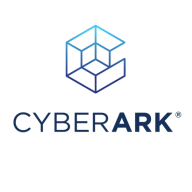


CyberArk Identity and AWS Identity and Access Management compete in the identity and access management market. AWS IAM appears to be a more comprehensive solution due to its robust features, while CyberArk offers strong pricing benefits and support.
Features: CyberArk Identity includes advanced threat detection, comprehensive reporting, and a wide range of security policies. AWS IAM offers scalability, extensive API integration, and seamless integration within the AWS ecosystem.
Room for Improvement: CyberArk could enhance its threat response time, increase integration with third-party applications, and improve user interface design. AWS IAM may benefit from streamlined setup for non-AWS native applications, enhanced user interface simplicity, and improved documentation for new users.
Ease of Deployment and Customer Service: CyberArk Identity provides a straightforward deployment process with solid customer support focused on security. AWS IAM offers seamless deployment within AWS environments, though it may require more initial setup for non-AWS applications. AWS's extensive support resources help manage deployment complexity.
Pricing and ROI: CyberArk Identity's pricing structure is competitive, offering high ROI for cost-effective identity management. AWS IAM may have higher initial costs but delivers significant ROI through scalability and a feature-rich environment, valuable to those invested in AWS infrastructure.
I believe AWS provides significant ROI by reducing infrastructure costs and improving scalability and business agility.
AWS Identity and Access Management ensures security and allows for scalable application deployment.
It saves time by not requiring extensive manual setup.
I have seen over 30% return on investment due to the improvement in operational efficiencies through automation, which enhances productivity.
We do not contact their technical support directly because we have a service agreement already in place with them with some dedicated and some non-dedicated resources.
first-level support lacks expertise
Responses from AWS engineers aren't always direct, so when urgent issues occur, I manage them immediately and prioritize solutions.
The service is straightforward, and I haven't encountered much complexity.
We haven't needed to contact technical support as the IAM tool is intuitive and configured on our end.
They always respond on time and offer 24/7 support.
They resolved the problem immediately after I reported it, on the same day, within one hour.
They respond immediately when requests are raised, and they are always available for priority one tickets.
The scalability of Omada Identity is excellent; they offer flexible pricing for licenses, accommodating both full accounts and lighter identities, which makes it truly scalable.
Scalability in AWS is significantly easier compared to on-premise solutions.
I implemented centralized and scalable solutions to improve larger setups.
The system's scalability could be enhanced to support larger organizations and better integrate with existing applications.
We can use it on different phones and computers, demonstrating its scalability.
For scalability and reliability, it rates a perfect 10 out of 10.
You can scale it out pretty easily, and you can implement it very small.
In terms of stability, I rate Omada Identity a nine out of ten.
It was initially tough to identify the cause, yet by simplifying user management and utilizing group roles, I have managed to solve these issues.
AWS Identity and Access Management is designed to keep networks secure by ensuring only authorized users can access necessary data.
AWS Identity and Access Management is very stable.
We no longer have our data infiltrated by unauthorized persons, and tracking actions within the system has become very easy.
When you have it in the cloud, you have CyberArk every time you need it.
With a stable network, due to the redundant data centers across the globe, it is a lot easier to use as a SaaS solution.
The biggest issue, which is the reason why we are transitioning from their product to SailPoint, is the overall user experience.
There is room for improvement in Omada Identity, primarily in customization for administrators; many custom tasks require contacting providers even for simple changes.
If AWS could provide an option to automatically create templates based on desired access requirements, it would be extremely beneficial, especially for documentation and troubleshooting purposes.
AWS Identity and Access Management needs improvement in the prevention of unauthorized access to sensitive data and models.
The user activity tracking in AWS Identity and Access Management should be enhanced to provide detailed descriptions of user activities.
Integration or deployment is extremely difficult for CyberArk Identity.
There's a need to enhance network performance.
For CyberArk Identity, you need knowledge of their scripting language to pull different sets of reports.
They are lower than some of their competitors.
the product itself is said to have a good price, although the support can be expensive.
Initial setups do not require significant capital expenditures, making it advantageous for organizations to utilize AWS services.
Azure is often chosen for cost-efficiency.
While it offers good value for money, a reduction in costs would be appreciated by any organization.
Regarding pricing, it can be quite a lot for small companies.
The pricing is acceptable.
If I am not going fully cloud, there are additional resources I will need to purchase, such as spinning more VMs or acquiring an HSM device to encrypt the vault.
Omada Identity helps automate reviews of access requests and reroutes them to appropriate people, which is what it should do; it really assists in reducing the workload time.
Technically, the product does everything one would expect from an identity and access management platform.
The solution enables differentiation in tasks, such as managing cross-account access, setting service roles, and integrating corporate directories for temporary AWS access.
Its role-based access control enhances security by allowing me to assign specific permissions to users, which helps in managing access and maintaining cost control.
Specific permissions can be given to users, allowing tailored access to instances and S3 buckets.
It impacts zero trust security strategies. It prevents lateral movements in the organization.
The two-factor authentication is very important, but the fact that every account is being regenerated every time we use it is the most important security feature for us.
It is the most powerful access management system.
| Product | Market Share (%) |
|---|---|
| Omada Identity | 3.1% |
| AWS Identity and Access Management | 0.3% |
| CyberArk Identity | 2.2% |
| Other | 94.4% |



| Company Size | Count |
|---|---|
| Small Business | 8 |
| Midsize Enterprise | 3 |
| Large Enterprise | 41 |
| Company Size | Count |
|---|---|
| Small Business | 9 |
| Midsize Enterprise | 1 |
| Large Enterprise | 3 |
| Company Size | Count |
|---|---|
| Small Business | 20 |
| Midsize Enterprise | 4 |
| Large Enterprise | 10 |
Omada Identity is an identity governance and administration (IGA) solution designed to help organizations manage and secure digital identities and access across their IT environments. It focuses on enhancing security, compliance, and efficiency by automating identity management processes.
Omada Identity offers a robust set of features that streamline identity lifecycle management, access governance, and compliance reporting. It integrates with a wide range of IT systems, applications, and data sources, providing a centralized platform for managing user identities and access rights. The solution enables organizations to enforce security policies, ensure regulatory compliance, and reduce the risk of unauthorized access.
What are the critical features of Omada Identity?
What benefits or ROI items should users look for in the reviews when evaluating Omada Identity?
Omada Identity is widely adopted across various industries, including healthcare, finance, and manufacturing. In healthcare, it helps protect patient data and comply with regulations like HIPAA. In finance, it ensures compliance with SOX and other financial regulations. In manufacturing, it secures access to sensitive production data and intellectual property.
Pricing and licensing for Omada Identity are typically based on the number of users and the specific features required. Customer support is available through various channels, including online resources, support tickets, and professional services for implementation and customization.
In summary, Omada Identity is a comprehensive IGA solution that enhances security, compliance, and efficiency in managing digital identities and access.
AWS Identity and Access Management offers comprehensive security controls like role-based access, MFA, and password management. It streamlines user permissions and integration with AWS services, focusing on efficiency and security with features such as flexible access options and global usability.
Organizations rely on AWS Identity and Access Management to manage secure authentication and authorize access across AWS services. This service supports cross-account scenarios and corporate directory integration, providing a secure, scalable, and efficient platform. Despite its strengths, improvements could be made with a graphical interface for permission management, better workload handling, and enhanced documentation. It offers robust policy-based controls and adapts to global usage without frequent updates.
What are the key features of AWS Identity and Access Management?
What benefits should be considered when evaluating AWS Identity and Access Management?
Industries implement AWS Identity and Access Management to manage user permissions and access policies across AWS services, focusing on secure authentication and authorization within teams. It is crucial for identity creation, role management, and policy controls in sectors like IT, healthcare, and finance, supporting diverse account structures for compliance and security.
CyberArk Identity is a versatile identity management solution suitable for a wide range of enterprises. It is designed to enhance enterprise security and improve user experience. Its focus on security, compliance, and operational efficiency, combined with positive user feedback, makes it a strong contender in the identity management space.
CyberArk Identity offers a robust suite of features to manage user identities and access privileges. It focuses on securing access to resources across various environments, including cloud and on-premises applications. Its capabilities include single sign-on (SSO), multi-factor authentication (MFA), lifecycle management, and privileged access management. These features are engineered to streamline access control, enhance security, and ensure compliance with regulatory standards.
According to our user interviews, CyberArk Identity is praised for its reliability and user-friendly interface. IT professionals highlight the ease of integration with existing systems, while business executives appreciate the visibility it provides into access and identity management across the organization. Users also commend the responsive customer support, which is crucial for enterprise-level solutions.
IT Professionals found that CyberArk Identity's focus on multi-layered security significantly reduced the risk of data breaches and unauthorized access. With a centralized dashboard and automation features, you can streamline identity and access management tasks, saving time and reducing complexity. Finally, it helps meet various compliance requirements.
We monitor all Identity Management (IM) reviews to prevent fraudulent reviews and keep review quality high. We do not post reviews by company employees or direct competitors. We validate each review for authenticity via cross-reference with LinkedIn, and personal follow-up with the reviewer when necessary.